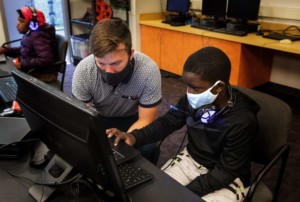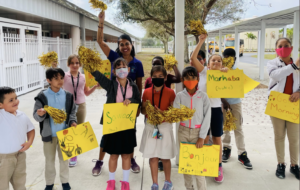Fostering Academic Success for All

By Karla Phillips and Jesse Hahnel
“We have a unique moral and legal obligation to ensure students in foster care receive the educational opportunities they need to thrive in school, and in life,” said Jesse Hahnel, National Center for Youth Law (NCYL) Executive Director. “We are committed to helping state education agencies effectively implement the foster youth provisions of ESSA.”
This year Congress replaced No Child Left Behind (NCLB) with the Every Student Succeeds Act (ESSA). Few would deny that the greatest virtue of NCLB was the requirement to disaggregate student achievement data by subgroup; thus, shining an overdue spotlight on the achievement gap that remains pervasive in most of our country’s schools.
However, ESSA expands the focus to a group of children that arguably the government should care about the most–foster children. These are students that, by definition, are wards of the state.
As wards of the state and without consistent adult support, foster children move from school to school. Unsurprisingly, studies have consistently found that:
- Twice as many foster children repeat a grade.
- 71% of foster children are behind grade level in English.
- 67% of foster children have been suspended from school and 17% have been expelled, more than three times the rate of the general student population.
- Foster youth are three times as likely to drop out of high school as their peers.
- Only 1.8% of former foster youth complete a bachelor’s degree by age 25, compared to 24% of the general population.
ESSA provides more support for foster youth by requiring immediate enrollment, timely record transfers, adoption of specific local transportation policies, and specifying that foster youth have a right to remain in their school of origin unless determined not to be in their best interest. Similar to students experiencing homelessness, state education departments must now identify a foster youth education coordinator and school districts must designate a coordinator if the local child welfare agency has done so.
And for the first time states must make public, disaggregated achievement data and graduation rates for foster youth.
The National Center for Youth Law (NCYL) has been a driving force behind these reforms. They have partnered with a number of states to develop and implement policies and programs that provide students in foster care the unique supports they need to succeed in school.
- In Indiana, NCYL’s FosterEd program began as a privately funded demonstration project in Marion County. Its success resulted in it becoming a publicly funded statewide initiative of the Indiana Department of Child Services.
- In California, FosterEd led the effort that resulted in California becoming the first state to include foster youth in its education accountability framework. As a result, California districts have allocated over $20 million to fund foster youth education programs.
- In Arizona, FosterEd worked with the Office of the Attorney General and Administrative Office of the Courts to develop new judicial processes for appointing foster youth educational champions. Governor Ducey recently signed HB 2665, legislation that creates and funds a new statewide foster youth education program based on FosterEd’s demonstration site in Pima County. The bill also allows charter schools to give enrollment preference to foster youth.
Debate has already begun regarding the implementation of these new provisions but the good news is that the success of foster youth is finally being discussed in earnest. If the success of ALL students is really the goal then tough conversations will be necessary.
Ensuring schools are held accountable for the academic achievement of foster youth is a big step but the needs of foster youth also demand data portability, course access and school choice. The potential of these reforms to facilitate the ability of families and case managers to provide seamless transitions, flexibility and options for foster youth are limitless. As we continue to pose education reform measures we must ensure that the solutions we propose are not only accessible to all students but intentionally designed for the students who need them the most.
For more information about ESSA, see ExcelinEd’s Federal Law: The Every Student Succeeds Act and:
- Federal Education Law Delivers Vital Protections for Foster Youth
- “Yes, but…” An ESSA Myth Buster
- ESSA: The Same, the Changed and the New, Oh My!
- ESSA: From Compliance to Opportunity
Karla Phillips is Policy Director at the Foundation for Excellence in Education. Follow her on Twitter: @azkarla.
Jesse Hahnel is Executive Director of the National Center for Youth Law (NCYL). Follow him on Twitter: @NCYLNews.
Stay in-the-know with all things EdTech and innovations in learning by signing up to receive the weekly Smart Update. This post includes mentions of a Getting Smart partner. For a full list of partners, affiliate organizations and all other disclosures please see our Partner page.






0 Comments
Leave a Comment
Your email address will not be published. All fields are required.